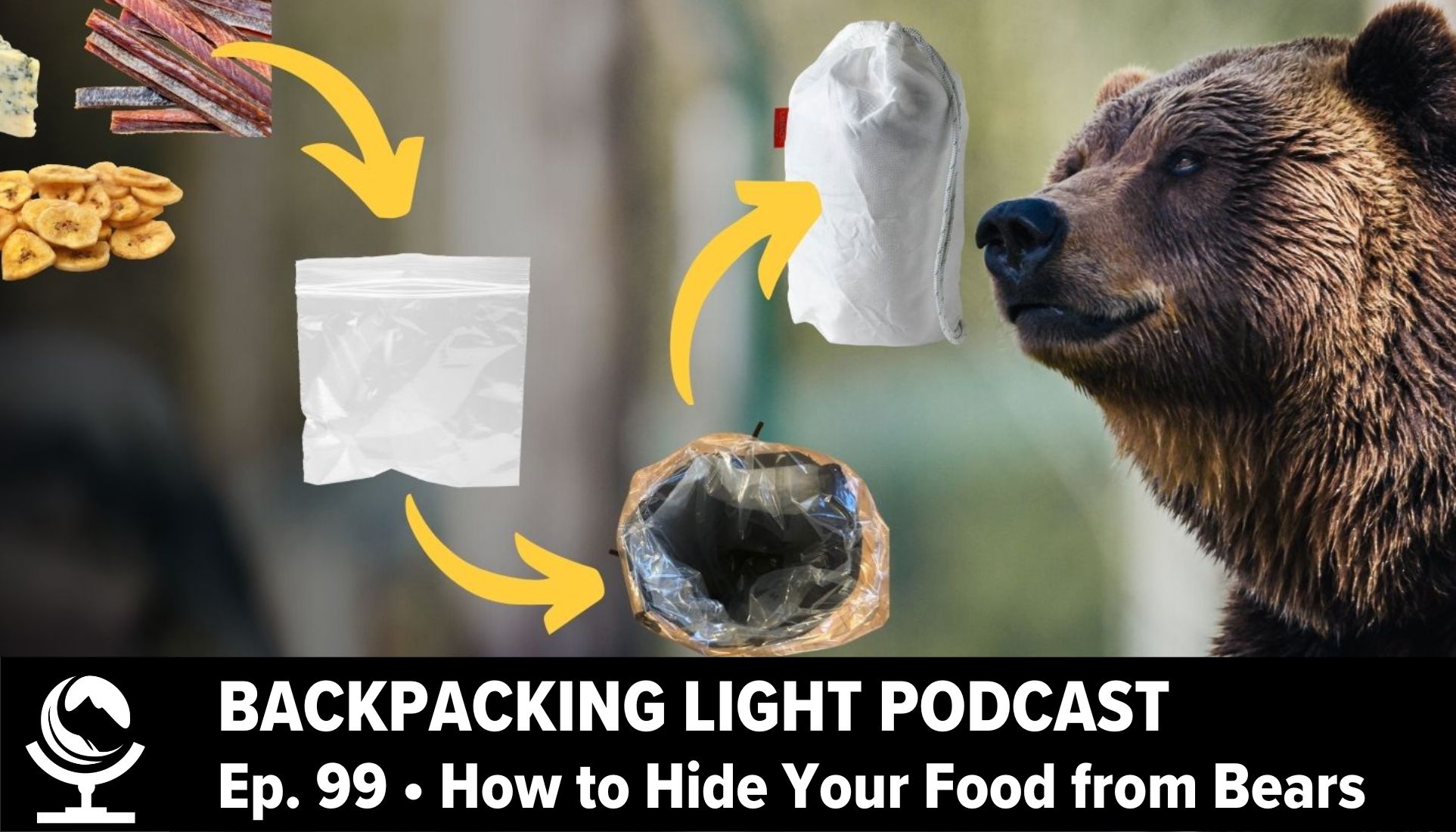Episode 99 | How to Hide Your Food from Bears
Episode Summary
In episode 99 of the Backpacking Light podcast we're going to learn about how bears smell, and what you can do to hide your food from the nose of a bear.
Listen
Summary
In today’s episode of the Backpacking Light podcast we’re going to learn about how bears smell, and what you can do to hide your food from the nose of a bear.

In this Episode:
What’s New at Backpacking Light?
- Member Q&A Live Stream: Strategies for Hanging Bear Bags – March 21, 2024
- Sun Protection Webinar with Daniel Hu – March 27, 2024
- Submit your testimonials for the 100th episode of the Backpacking Light Podcast by March 16, 2024 for a chance to win an Unlimited Lifetime Membership!
The Cottage Gear Innovation Awards

- Kula Cloth
- FarPointe Outdoor Gear Alpha Cruiser Hoodie
- Durston X-Mid 1P Tent
- Nylofume Liners
- Lifetime Contribution Award – Henry Shires and Tarptent
- Submit your nominations for the Cottage Gear Innovation Awards!
Main Topic: How Bears Smell and What Can You Do About It?
- The differences between bears being food-motivated vs. food-conditioned vs. habituated to humans.
- The science behind food conditioning.
- Comparing the nose of a human, dog, and bear – more olfactory receptors means more odor sensitivity; size of olfactory receptors means more range of smell.
- By storing foods in a system using plastic ziploc bags, mylar bags, and Nylofume liners, and an Ursack or bear canister, you can reduce the range bears can smell the food down to 0.01% of what it would be originally.
- Keep the outside of your food bags odor free!
Links, Mentions, and Related Content
- Skills: How to Use an Ursack
- Trail Days 2024: The Nose of a Bear, by Ryan Jordan
- Webinar: Using an Ursack: Techniques and Supplies for Packing, Using, and Securing an Ursack
Submit a Tip, Trick, or Question
Share your tips, tricks, and questions on the podcast – submit it via email to [email protected].
Go Deeper with Backpacking Light
- Sign up for the Newsletter
- Become a Backpacking Light Member
- Follow us elsewhere on the web: YouTube | Instagram | Facebook
How to Subscribe
- Apple Podcasts | Spotify | RSS
More Episodes
Credits
- Executive Producer - Backpacking Light; Show Director and Host - Ryan Jordan; Producer - Chase Jordan; Theme music: Look for Me in the Mountains written by Chris Cunningham and Ryan Jordan, performed by Chris Cunningham (acoustic guitar, lead and harmony vocals, harmonica), Chad Langford (upright bass), and Tom Murphy (mandolin), produced by Basecamp Studios in Bozeman, Montana.
Feedback / Tips / Questions
More Backpacking Light
- Sign up for the Newsletter.
- Become a Backpacking Light Member.
- Follow us elsewhere on the web: YouTube | Instagram | Facebook
Disclosure
- Sponsorship Policy: Backpacking Light does not accept compensation or donated/discounted products in exchange for product mentions or placements in editorial coverage, including any podcast episode content not excplicitly identified as sponsored content.
- Some (but not all) of the links in these show notes may be affiliate links. If you click on one of these links and visit one of our affiliate partners (usually a retailer site), and subsequently place an order with that retailer, we receive a commission on your entire order, which varies between 3% and 15% of the purchase price. Affiliate commissions represent less than 15% of Backpacking Light's gross revenue. More than 70% of our revenue comes from Membership Fees. So if you'd really like to support our work, don't buy gear you don't need - support our consumer advocacy work and become a Member instead.
- Learn more about affiliate commissions, influencer marketing, and our consumer advocacy work by reading our article Stop wasting money on gear.




Home › Forums › Episode 99 | How to Hide Your Food from Bears